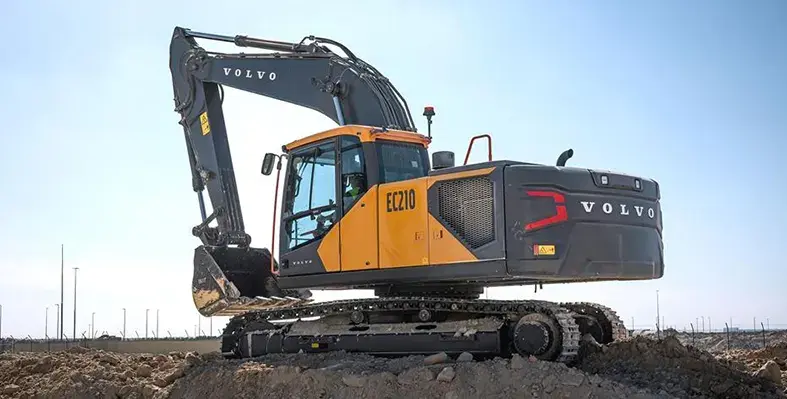Following the launch of its next-generation excavators for the Middle East and Africa, Volvo Construction Equipment (Volvo CE) recently validated their on-site performance through rigorous comparative testing in the Gulf region
The models – EC210, EC220, and EC360 – went head-to-head with competing machines from top global OEMs in real-world truck loading tasks, assessed on key metrics including productivity, fuel efficiency, durability, operator comfort, safety, and serviceability.
All machines were tested under identical site conditions using a dig-swing-dump-repeat cycle. Operators included a Volvo R&D veteran with 15 years of experience and two local contractors with a combined 22 years of excavator operation. The consistent conditions ensured fair performance evaluation across all brands.
EC210: Power meets precision in 22-tonne class
Delivering stronger productivity and improved fuel efficiency — even at lower RPMs.
In the 22-tonne category, the EC210 stood out by achieving up to 7% greater productivity and 14% better fuel efficiency than rivals in the same weight class. Despite operating at lower RPMs, the machine demonstrated optimal power-to-efficiency balance, making it ideal for applications like roadworks, site preparation, and utilities. "It’s a compact powerhouse, especially for contractors focused on output without excessive fuel costs," said Olle Watz, product manager at Volvo CE Region International.
EC220: Boosted output for bigger demands
Strikes a balance between power and fuel economy in high-volume operations.
The EC220 built upon the EC210’s strengths, boasting a 32% increase in productivity while maintaining comparable fuel usage. Its higher output makes it suitable for heavy-duty tasks like bulk excavation and materials handling. According to Watz, “The EC220 delivers high return where speed and volume matter without compromising efficiency.”
EC360: Bigger Isn’t always better
Outpaces larger rivals in productivity and efficiency, even at reduced RPM.
The heavyweight EC360 surprised testers by outmatching larger-class competitors. Despite running at a fuel-saving 1,500 RPM, it achieved up to 25% higher productivity and 21% greater fuel efficiency compared to competitors operating at peak RPM. “This model proves that thoughtful design can outperform brute force,” noted Watz.
Smart design, safer sites
From ROPS cabs to enhanced visibility, safety is built in from the ground up.
Safety features were a key differentiator. Volvo was the only OEM to offer a ROPS-certified cab as standard. Added elements like deck lighting, slip-resistant surfaces, smartly placed handrails, and a built-in rear-view camera highlighted the brand’s operator-first approach. Test operators praised visibility and ergonomic layouts that reduced fatigue over long shifts.
Serviceability with uptime in mind
Ground-level access, smart layout, and maintenance-friendly features keep jobs moving.
Ease of maintenance also played a role in Volvo CE’s top scores. Features like a smaller engine hood, improved ground-level access to service points, and anti-clog track holes make daily upkeep simpler and faster — critical in the demanding environments of the Middle East and Africa.
These real-world trials not only reaffirm Volvo CE’s engineering direction but underscore its ability to deliver reliable, cost-effective solutions that meet the region’s harsh worksite demands.





